It was a busy summer of science at Summit Station in 2023. The station saw an expansion of astrophysical equipment to measure neutrinos from space. The Radar Echo Telescope (RET) will be a nice complement to the existing Radio Neutrino Observatory in Greenland (RNO-G), which has been gearing up at Summit for the past few years. In addition, two ice coring projects acquired relatively short ice cores for studying atmospheric gases and aerosols. To top it off, the long-standing ICECAPS project at Summit made special observations of atmospheric aerosol concentrations and size distributions using a novel kite.
Looking for Neutrinos with Radar
This summer at Summit Station, the Radar Echo Telescope collaboration deployed our first prototype instrument to the ice, to test a new detection method for ultrahigh energy neutrinos using active radar sounding. Neutrinos are weakly interacting subatomic particles that hold clues to outstanding questions about nature at the smallest and largest scales, from particle physics to astrophysics. Testing new technologies to detect them presents challenges because at the highest energies, they are exceedingly rare and difficult to detect.
Our prototype at Summit therefore uses different particles, cosmic rays, as a test bed for the radar detection method. An ultrahigh energy cosmic ray (a charged particle or atomic nuclei from outer space with up to a joule of energy per nucleon) will produce a shower of secondary particles when it interacts at the top of the atmosphere. For a very high energy primary particle, a large fraction of this energy will reach the surface of a high elevation ice sheet, like Greenland, creating a secondary particle shower inside of the ice. This latter shower is orders of magnitude more dense, owing to the density of ice versus air, and mimics the interaction that we expect from the far more rare neutrino interactions in deep ice. The shower leaves behind a short-lived cloud of ionized electrons, which can be detected via radar. We therefore use these cosmic ray interactions as a "test beam" for our method.
A team of 5 people, including 3 graduate students from the US and Europe, deployed the instrument over a flight period in 2023, and a follow up team of 3 winterized it at the end of the season. Deployment involved assembling and raising a 3.6kW solar array, drilling 4 boreholes to deploy radio antennas, and commissioning the instrument. The system ran for several weeks with in-field troubleshooting and assistance provided by the excellent Station staff and our friends from the RNO-G experiment. We plan to deploy again in 2024 to take more data and see once and for all if the method is viable for a full-scale neutrino detector.
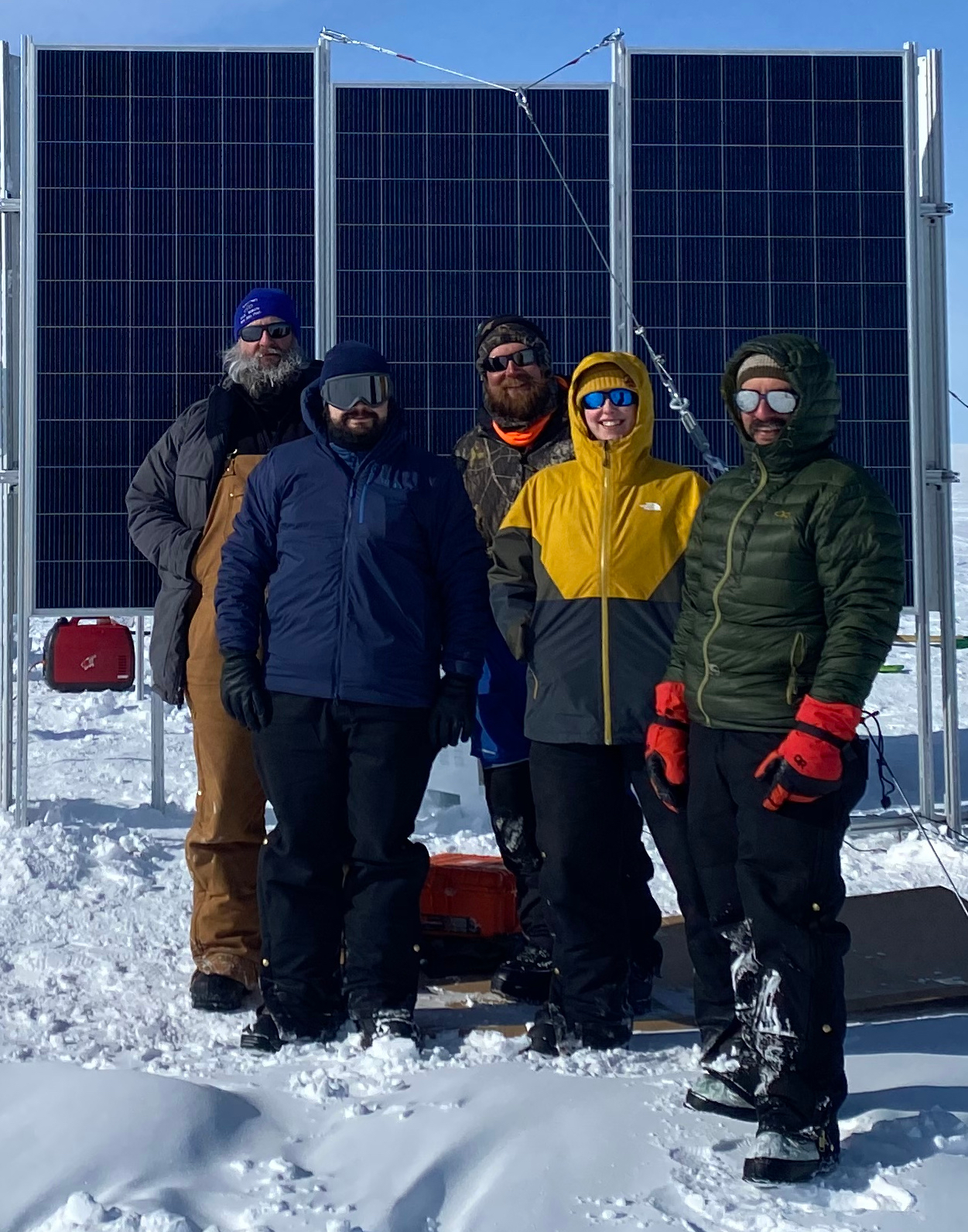
Figure 1. The Radio Echo Telescope (RET) team near Summit Station, led by Dr. Steven Prohira (right).
Ice core drilling to study interactions between gases, aerosols, and microbiology
Atmospheric gas records developed from polar ice cores are some of the most important datasets for climate science. The main goal of our project is to better understand how ice core gas records—developed from the tiny air bubbles preserved within the ice—interact with the liquid chemistry of the surrounding ice as well as assess if microbes within the ice are viable or even potentially active in our ice cores. To answer these questions, our team worked at Summit in May and June 2023 to recover and analyze a large-diameter ice core in the field. While on site, we worked in a sub-surface, covered trench excavated prior to our arrival that housed the ice core drill, a core processing station, and the Bally Building where we set up our instruments and continuous flow analysis set up. The trench was located within camp, allowing us to work in all but the worst of weather. We measured gases (e.g., carbon monoxide and methane) and ice liquid chemistry (e.g. conductivity, dust, and black carbon) in the field to assess how these chemical species may be impacted by ice storage and handling in the field. While much of our 150 m-long ice core was analyzed at Summit, the remaining ice was shipped back to the Desert Research Institute where the team will continue to make in-depth measurements of the ice as well as begin microbiological studies in the coming months. The research team thanks NSF OPP 2139293 for funding this project, NSF IDP for ice core drilling support, Liz Kaufmann for field coordination, and the staff at Summit Station for their support.
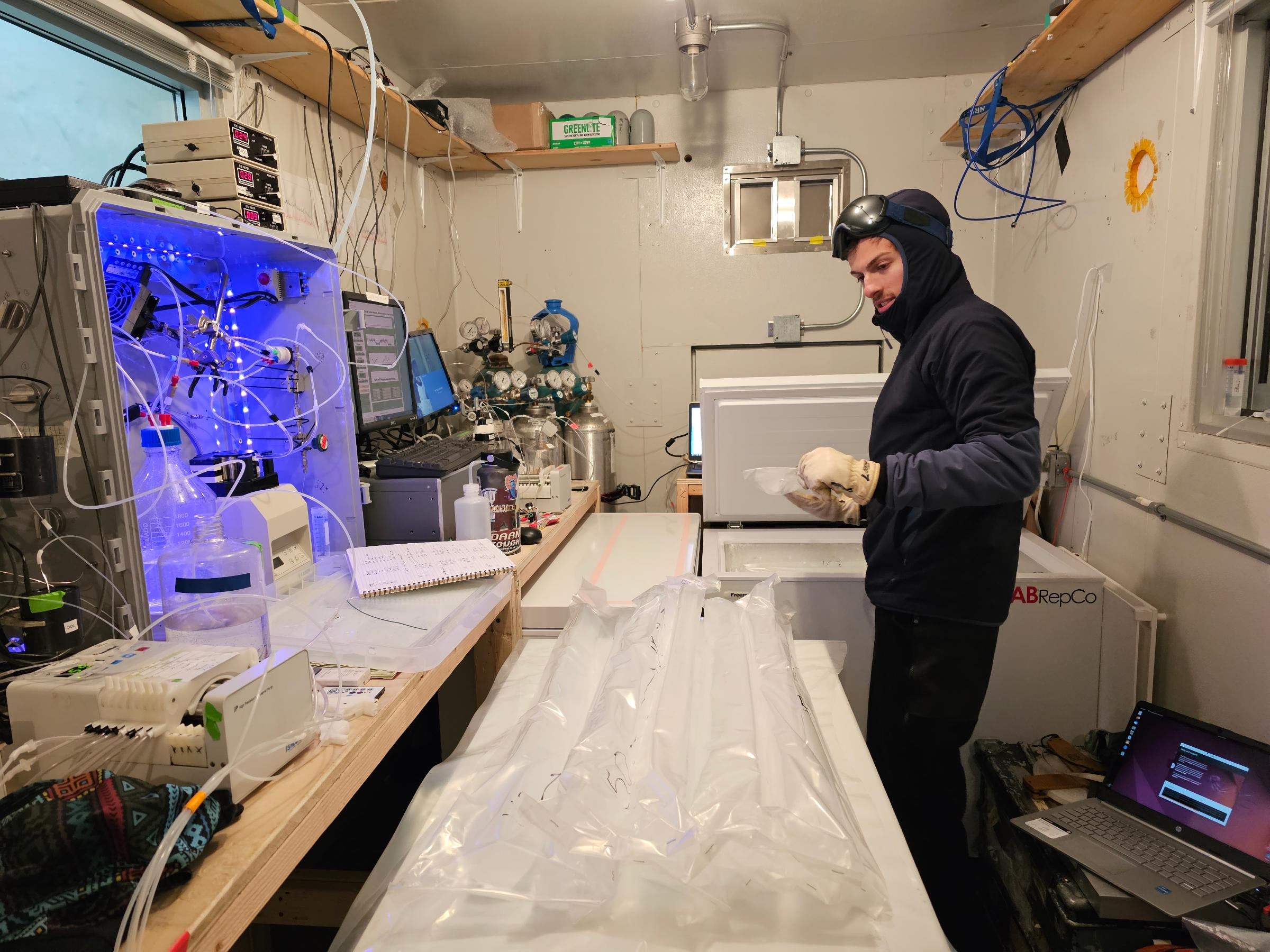
Figure 2. Our team set up a warm lab inside the Bally Building to analyze ice cores for carbon monoxide, methane, black carbon, and other chemical species. Here, Ben Riddell-Young is organizing ice cores for analysis.
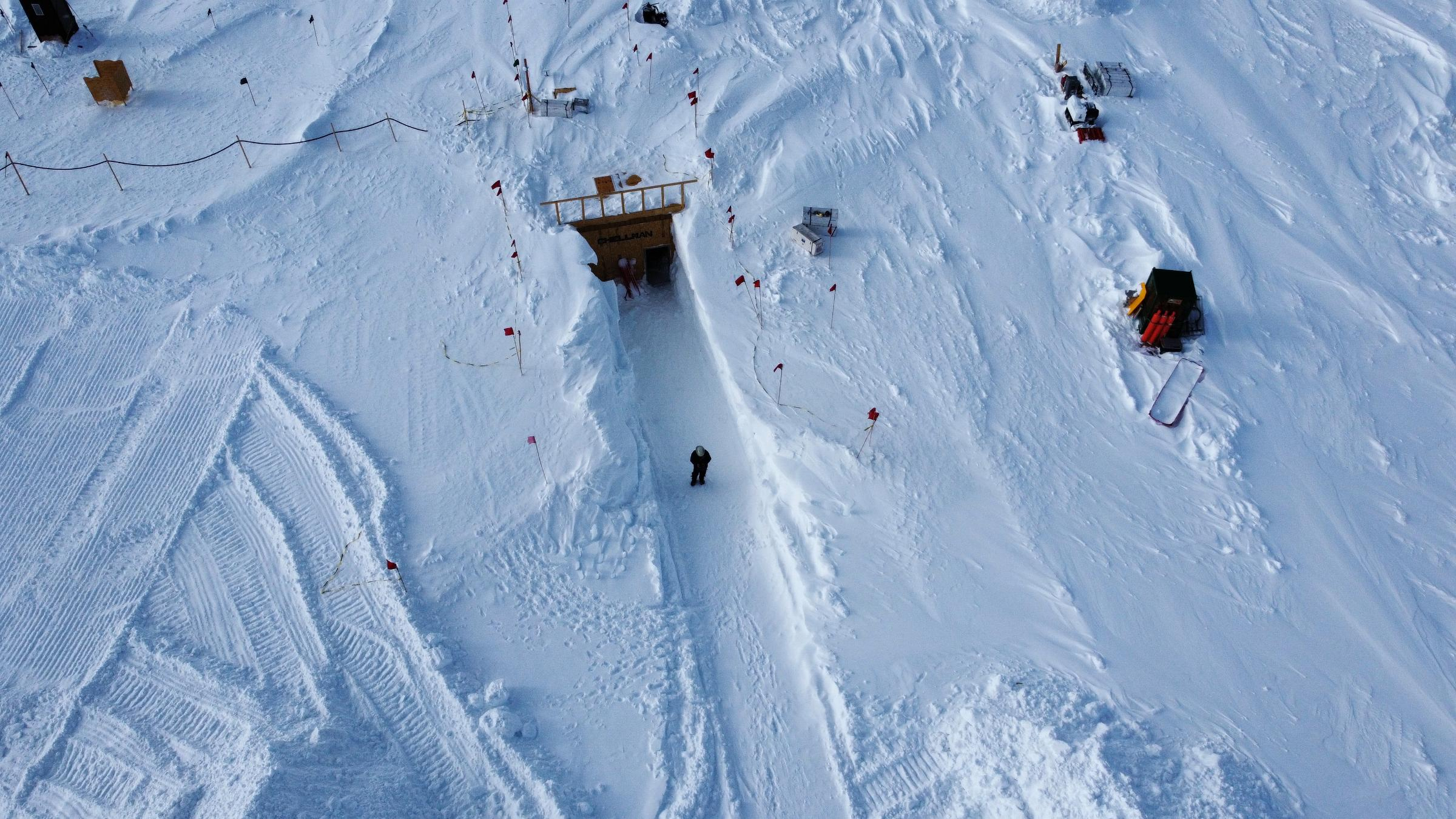
Figure 3. A bird’s eye view of the ramp into the trench.
Shallow ice core drilling at Summit to better understand sources of atmospheric chemistry
Becky Alexander and Jihong Cole-Dai led the drilling of five shallow (15-20 m) cores and dug one snowpit at a distance of about 6 km from Summit Station. Delayed arrival due to weather, combined with a cold and windy start and finish, left only a few good weather days for drilling. However, with the help, expertise, and energy of Nathan Chellman (DRI) and his team (Ben Riddell-Young from Oregon State University and Rachel Moore from Georgia Tech), they were able to accomplish their goals in just a few days. The team used a hand auger and sidewinder from the U.S. Ice Drilling Program (IDP), and traveled daily from Summit Station to the drilling site via snowmobile.

Figure 4. Ben Riddell-Young inspects a back-lit snow pit that was dug near the Alexander-Cole-Dai drilling site.
The ice cores were transported to South Dakota in July where they will be cleaned and measured for ion concentrations in the Cole-Dai lab. After the cores are dated, samples will be sent to Seattle where the sulfur isotopes of sulfate in the cores will be measured. The sulfur isotopes allow for source apportionment of sulfate, allowing for the quantification of the source from the marine biosphere. This combined with MSA measurements in the Cole-Dai lab will allow for the determination of changes in emissions and atmospheric chemistry of sulfur gases from the marine biosphere over the last 30 years. This time period will allow the Alexander team to determine the influence of sea ice melting on primary productivity in the North Atlantic, and any changes in the atmospheric chemistry of sulfur gases driven by anthropogenic emissions. It will also extend the current record of the same measurements made from an 800-year ice core drilled at Summit back in 2007 by Cole-Dai.
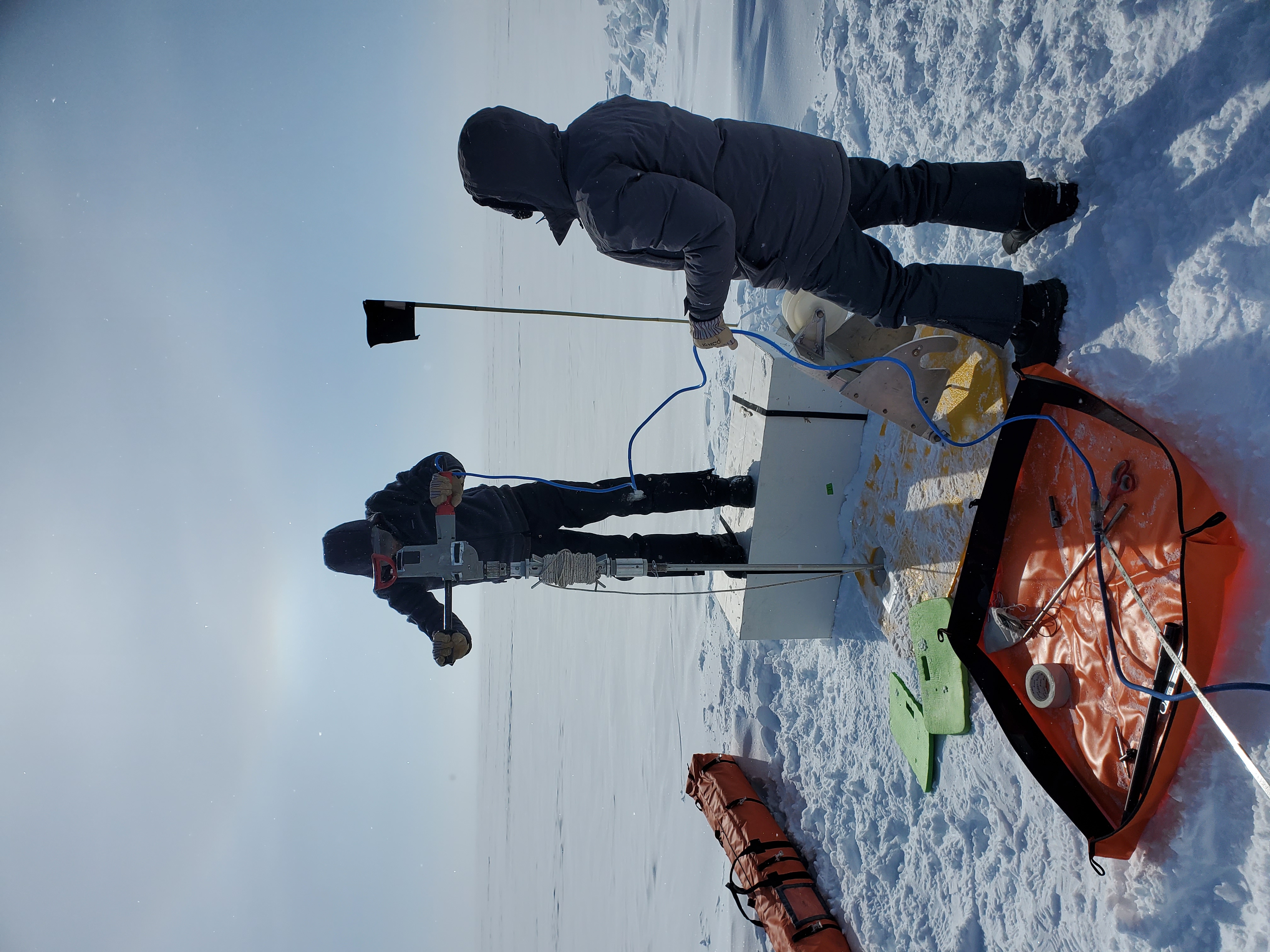
Figure 5. Nathan Chellman and Rachel Moore drill a core at the Alexandar-Cole-Dai site.
Helikite flies over Summit Station to measure Aerosol Properties
In August 2023 the ICECAPS team brought a Helikite to Summit Station – a tethered, 21 m3 helium filled balloon with a kite tail for providing stability, orientation, and additional dynamic lift. The objective of this campaign was to measure the vertical structure of aerosol particle size distributions up to 1 km above the surface, to better understand the cloud-relevant aerosol population and how it relates to the aerosol population measured at the surface under different thermodynamic conditions. This was the test-run for using the Helikite as a measurement platform at Summit and, to our knowledge, is the first time this platform has been tested in such low ambient surface air pressures and temperatures.
The Helikite lifted a battery powered instrument package consisting of a Portable Optical Particle Spectrometer (POPS) and a Windsond for measuring ambient air pressure, temperature, and relative humidity. A snowmobile was used to raise and lower the Helikite by attaching the end of the tether to the tow hitch and pulling the kite up and down through a redirection point that was well secured with snow anchors. The digging and setting of the snow anchors and establishment of the tether run took 1.5 days. Then the weather allowed, the Helikite was inflated inside the SMG and towed to the remote site with a great deal of support (and cheering) from station personnel. The first test flights were successful, and on the third day the Helikite reached 678 m a.g.l and sampled multiple distinct aerosol layers at different altitudes above the snow.
The campaign was heavily impacted by weather constraints preventing travel to the Helikite site. The ICECAPS team used this time to help complete several big maintenance jobs as part of the broader ICECAPS project, including raising and repairing instrumentation on the flux-tower, the annual relocation of the MSF building, and packing away the MELT sled for the winter.
In the end, nine successful Helikite profiles were carried out over six sampling days, and on three of those days, the target sampling altitude of 500 m a.g.l was exceeded. The highest flight reached 832 m a.g.l (4,032 m a.s.l). On all three days with higher profiles, distinct aerosol layers were sampled below the cloud base, demonstrating that surface aerosol measurements are not always sufficient to describe the cloud-relevant aerosol population. These are novel measurements over central Greenland and motivate future studies to the understand the vertical distribution of aerosol particles over central Greenland their relationship with cloud properties. As a proof of concept, collecting vertical measurements using a Helikite platform at Summit was a huge success. The support received from station personnel at all times was exceptional. Hopefully the Helikite will make another trip up to Summit soon!
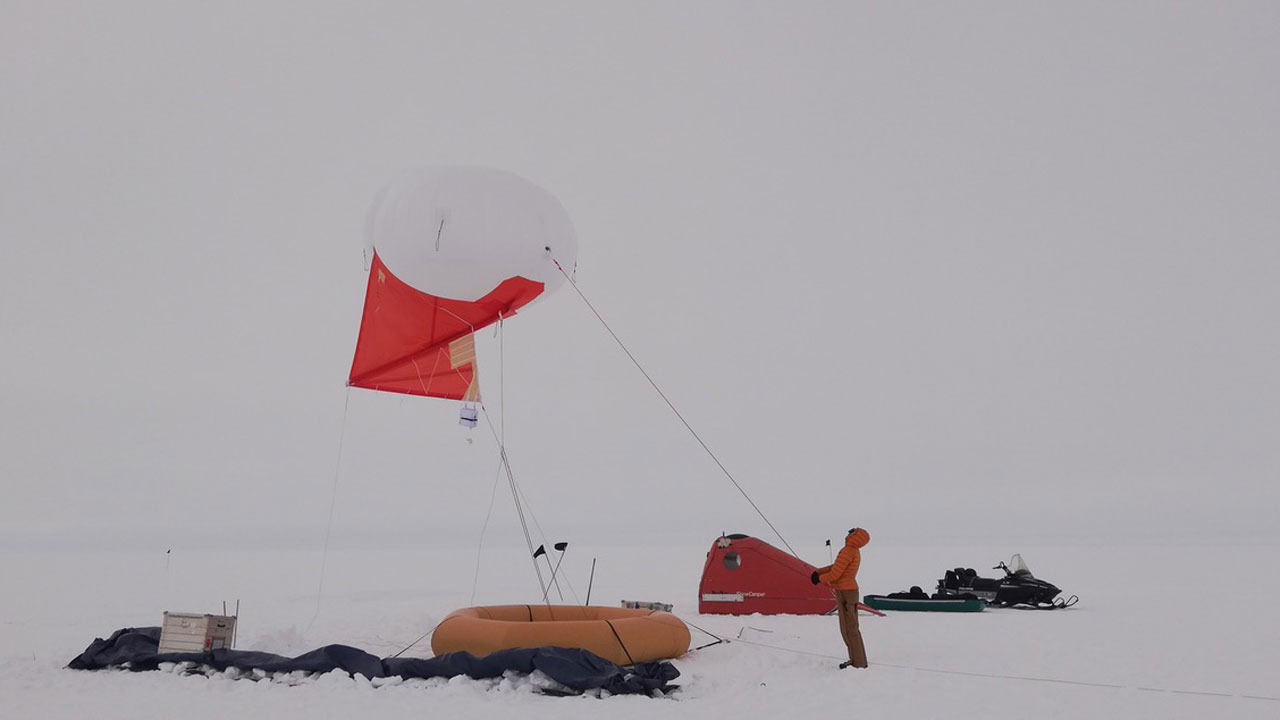
Figure 6. Andrew Martin prepares the helikite for launch near Summit Station.
